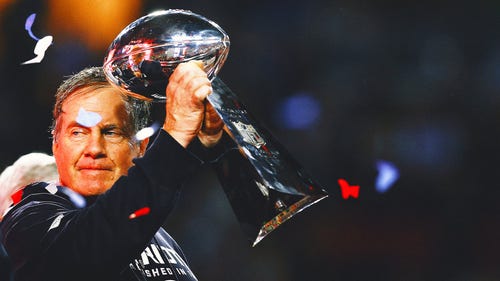
Column: Szabados inspiring but women deserve more
After leading Canada to a gold medal at the Sochi Olympics, Shannon Szabados took on a more imposing challenge.
Playing against the guys.
Szabados didn't look overmatched as the one of the few women to compete in a men's professional hockey league, starting two games in goal for the Columbus (Ga.) Cottonmouths late in the season. She lost them both, each by a single goal, but stopped nearly 90 percent of the shots that came her way and was even named the third star in one of the contests. More important, she surely inspired plenty of young girls to pursue their dreams, no matter how much the odds are stacked against them.
But the fact that Szabados' only real playing option after Canada's thrilling victory was to sign on with the low-level Southern Professional Hockey League shows just how far women's sports still lags behind, despite all the progress in the last four decades under Title IX.
At the very least, Szabados and so many other female athletes deserve leagues of their own.
Outside of the WNBA, there's virtually no conduit for women to make a decent wage in North American team sports after their high school and college careers are over. That's why Szabados eagerly joined the SPHL for a few games, even though some viewed it as nothing more than a publicity stunt for a team averaging less than 3,000 fans a game. That's why Jen Welter - all 5-foot-2, 130 pounds of her - is playing in a men's football league, taking on guys more than twice her size.
They have no choice, their options are limited.
''The goal is ultimately to get women's sports to the popularity level that the men are,'' Welter said when reached on her way to practice with the Texas Revolution of the Indoor Football League. ''If women's sports had the support and sponsorship and viewership that men's sports did, then women wouldn't have to go to a men's league to really be treated like top-level pro athletes.''
While it's inevitable at times like this to wonder if there will ever come a day when a woman might actually be good enough to earn a spot in the NHL or NBA or NFL or Major League Baseball, that's totally missing the point.
Frankly, it's not going to happen, certainly not in any of our lifetimes.
''It's just two different levels, honestly,'' said Nebraska basketball star Jordan Hooper, who was the Big Ten women's player of the year. ''Boys are more athletic than girls. That's kind of common sense.''
But even in basketball, which is by far the most lucrative of the team sports for women, there are sacrifices that must be made. The top players earn the bulk of their salaries in better-paying leagues overseas, then return home to play in the WNBA during the summer months. There is essentially no offseason, but you won't hear many complaints.
''We're making huge leaps and bounds from where we were even five years ago,'' Hooper said. ''We're getting our own publicity and our own athletes that are really going forward in our own realm in sports, so I don't even know if we need to step into the men's.''
Welter doesn't have that option.
She signed with the Revolution knowing everyone she faced would be bigger, stronger, faster. In the season-opening game, she ran the ball twice - once for a 1-yard gain, the other time thrown for a 4-yard loss.
But the fans loved it. And statistics aren't the most important thing here, anyway.
Welter really wants to change the way a lot of folks - both men and women - view female athletes.
''I want to show people that it's OK for girls to play football,'' Welter said. ''It's not only about overcoming physical challenges, but perceptional challenges.''
The NHL, NFL, Major League Baseball and Major League Soccer need to do their part now, much like former NBA Commissioner David Stern put his league's very considerable resources behind the founding of the WNBA in 1996. Without that support, there's little doubt the fledgling organization would've collapsed like just about every other attempt at starting a women's pro sports league. Now, with the NBA having gradually backing away, the WNBA stands at 12 teams and is getting set for its 18th season.
It continues to struggle for attention, to be sure, but it's still here.
Maybe it's time for the other major leagues to put some money and influence behind women's sports. For instance, there are surely enough good female hockey players for the NHL to help set up a WNHL, and it doesn't necessarily require the massive financial commitment the NBA made.
There could be four to six teams, perhaps all based in the Northeast or Midwest to cut down on travel costs. They could play doubleheaders in conjunction with the regular NHL games, which would give early arrivers a chance to take in two games for the price of one. Over time, hopefully, more fans and corporate sponsors would be attracted to the women's league, giving it a chance to stand on its own feet and growing the game for everyone.
For Szabados and those little girls she's inspiring, it's time.
Time for a league of their own.
---
Paul Newberry is a national writer for The Associated Press. Write to him at pnewberry(at)ap.org or www.twitter.com/pnewberry1963










